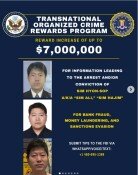Three codes to uncover N. Korean leader
Three codes to uncover N. Korean leader
Posted April. 12, 2013 07:25,
On April 11, 2012, North Korean leader Kim Jong Un assumed the posts of the first secretary of the Workers Party of Korea, a standing member of the presidium of the partys Central Committee and chairman of the partys Central Military Commission. The one year of leadership by the young leader in his 20s who studied overseas was marked by a nuclear test, two long-range rocket launches and blatant threats to South Korea and the United States. In a country ruled by a hereditary dictator such as North Korea, the leaders personal characteristics are directly reflected to state policies. The Dong-A Ilbo has analyzed three code of Kim Jong Un, whose brinkmanship has put his country on the edge of a precipitous cliff.
① Strong desire to win
According to Kenji Fujimoto, a Japanese chef who worked as the Norths late leader Kim Jong Ils personal cook before fleeing back to Japan, the junior Kim showed a strong desire to win as a boy. The chef said that after Kim Jong Uns team was defeated by one led by his older brother Kim Jong Chol, Jong Un did not tolerate his teammates mistakes and made them go through rigorous training to win next time. In contrast, the older brother encouraged his team members. When Kim Jong Un got angry while playing marbles with the older brother, he threw marbles at the brothers face. In April 2009, North Koreas state security agents raided, under Kim Jong Uns order, a safe house in Pyongyang where his oldest brother, Kim Jong Nam, was stayin. Kim Jong Un was 25 at the time.
Experts say that Kim Jong Uns eccentric desire to win is directly reflected onto the Norths policy toward South Korea and the U.S. Accorging to them, Kims desire to win in the competition with the South is expressed as extreme hostility toward Seoul and that Pyongyangs nuclear threat to Washington also reflects, to a certain extent, Kims disliking of losing. Some argue that Kim was seeking compensation for his frustration over his inability to militarily attack the South through cyber terrorism against the South.
② Groomed as military leader
When young, Kim Jong Il was groomed as a leader at organization guidance and propaganda department under North Korean ruling Workers` Party. Because of his propaganda campaign idolizing Kim Il Sung, Kim Jong Il was able to rise as the heir apparent to his father and the then North Korean leader Kim Il Sung by purging his uncle and rival Kim Yong Ju.
In contrast, Kim Jong Un reportedly studied artillery at Kim Il Sung Military University until December 2006 after returning from studying in Bern, Switzerland in 2001. North Korea propagandizes that Kim Jong Un made the Norths first operation map based on global position system (GPS) information as his graduation thesis. The fact that Kim was groomed as a military leader from the beginning is likely to have become fixed as todays extreme hostility, said a North Korea expert in Seoul. Kim Jong Un is known to have led the Norths 2010 artillery attack on the Souths frontline Yeonpyeong Island.
③ Return to Cold War-era model of Kim Il Sung
South Korean government officials and experts have paid attention to Kim Jong Uns striking resemblance to his grandfather in both style and moves. Unlike his father who shied away from being in public, Kim Jong Un propagandizes his public speeches through the North Korean media. Kim Jong Un took Kim Il Sung as his role model because his grandfather is more popular among North Koreans than his father.
The North attempts to overlap Kim Il Sungs myth as a great military commander who defeated the U.S. in the 1950-1953 Korean War with Kim Jong Un in order to address anxiety within the Pyongyang regime and establish the legitimacy of the hereditary power succession. The Norths recent announcement of simultaneously pursuing economic development and nuclear arms buildup is a copycat policy of Kim Il Sungs pursuit of economic development and military buildup.
zeitung@donga.com







